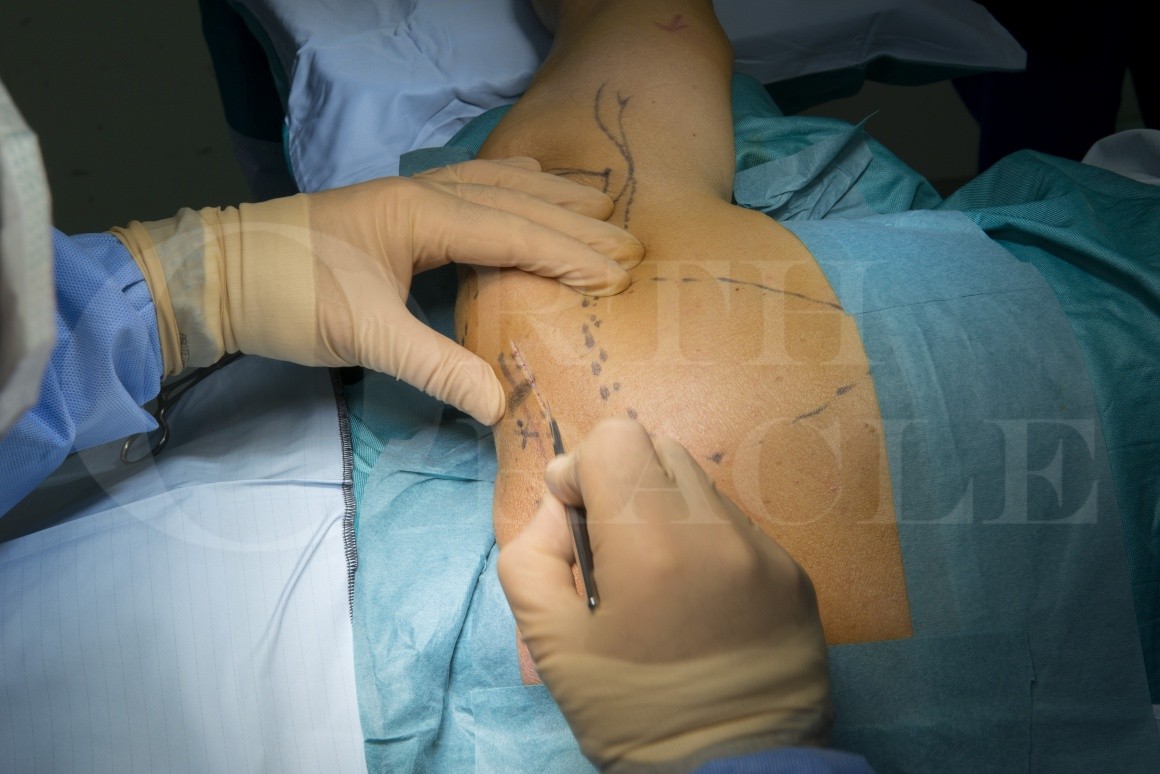Medial branch spinal accessory (XI) nerve transfer to Suprascapular nerve through a posterior approach
Overview

Subscribe to get full access to this operation and the extensive Upper Limb & Hand Surgery Atlas.
Learn the Medial branch spinal accessory (XI) nerve transfer to Suprascapular nerve through a posterior approach surgical technique with step by step instructions on OrthOracle. Our e-learning platform contains high resolution images and a certified CME of the Medial branch spinal accessory (XI) nerve transfer to Suprascapular nerve through a posterior approach surgical procedure.
The spinal accessory (XIth) nerve transfer to the suprascapular nerve is a reliable technique for restoring function to the supraspinatus and the infraspinatus following a complete injury to the C5 nerve root. The technique was traditionally performed using the lateral branch of the XIth nerve through an anterior approach at the time of neck exploration for a brachial plexus injury and nerve co-aptation was in the anterior wound and proximal to the supra scapular notch. Critical review of the results demonstrates some patients having little functional recovery and generally poor restoration of external rotation. The introduction of a posterior approach allows co-aptation to be performed closer to the paralysed muscles and the SSN can be decompressed at the notch and inspected for damage. Regenerating nerves are generally temporarily more swollen and may auto compress themselves at tight anatomical structures. In the high energy brachial plexus injury the relative tether of the SSN at the supra scapular notch by the supra scapular ligament renders the nerve liable to a traction injury and a rupture or neuroma in continuity may be overlooked when the transfer is performed using the anterior approach. The medial XIth nerve branch is used as the donor nerve in the posterior approach which avoids denervation of the lateral trapezius seen in the anterior approach. The lateral trapezius is important for shoulder elevation and is important for positioning of the arm in cases of complete paralysis of the supraspinatus and deltoid muscles seen after C5 injury. Typically the XI to SSN transfer is combined with transfer of a radial nerve branch from triceps to the axillary nerve in complete C5 lesions. My preferred technique for XI to SSN transfer is using the posterior approach. The procedure is technically more demanding than the anterior approach but with with a co-aptation performed closer to the target and the other advantages already discussed, it is difficult to justify not using this technique.
Author: Dominic Power FRCS Orth, Consultant Hand and Peripheral Nerve Surgeon
Institution: Peripheral Nerve Injury Service, Birmingham Hand Centre, Queen Elizabeth Hospital, UK
Clinicians should seek clarification on whether any implant demonstrated is licensed for use in their own country.
In the USA contact: fda.gov
In the UK contact: gov.uk
In the EU contact: ema.europa.eu
Online learning is only available to subscribers.



















